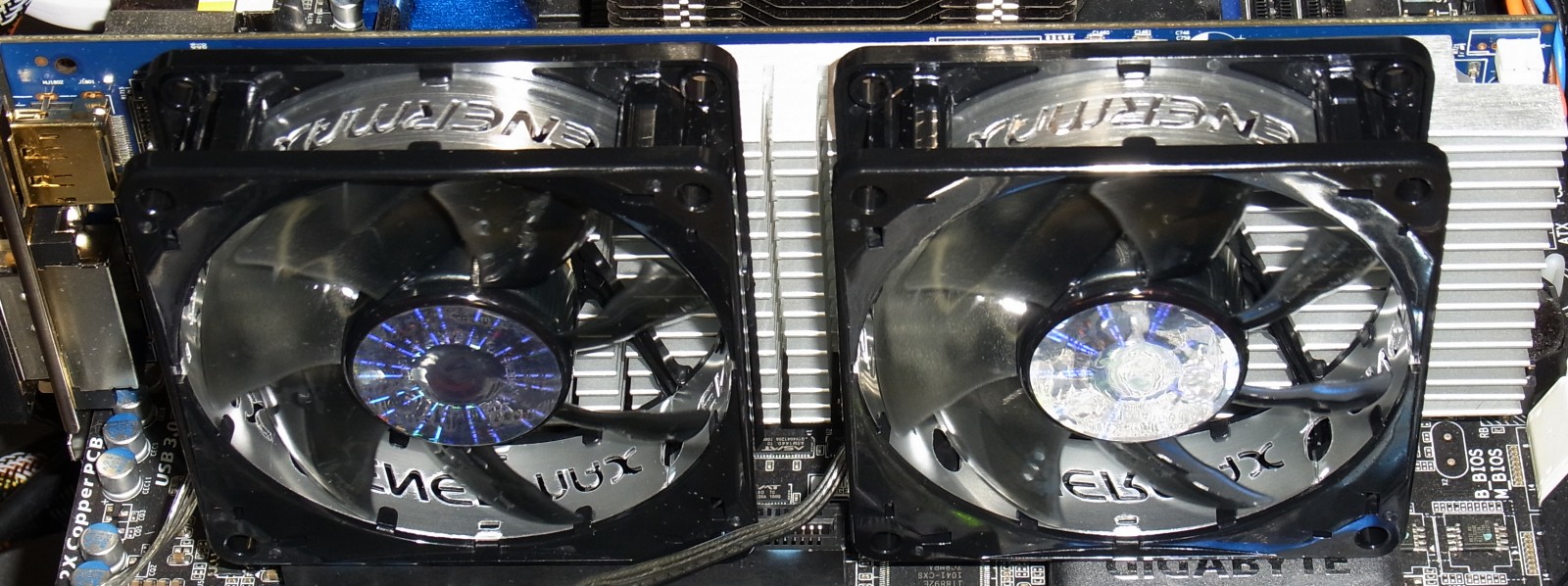How To: Properly Plan And Pick Parts For An Air-Cooled PC, Part 2
After discussing the theory of PC cooling, in Part One, we now move on to technology and implementation, discussing case fans, CPU coolers, and thermal grease. We even wrap up with a recipe you can use if you fail to cool your PC properly.
VGA Coolers: Single-Slot Whisper Cooler
DIY Improvements
Curiosity may have killed the cat, but it also got us to play around with another graphics card. We recently reviewed Afox's Radeon HD 6850 low-profile card on our German site. In that story, we used two 80 mm fans to improve cooling versus the OEM ones. Here, we want to up the ante in terms of performance and noise. The result is a completely usable low-profile card that doesn't generate much noise at full load. Once again, we dipped into the Tom's Hardware parts bin for a couple of spare fans.
Conversion in Two Stages
In the original review, we used a pair of Enermax T.B. Silence fans, which protrude slightly. Since the cooler is merely an inexpensive extruded aluminum slab, protruding fans do not offer any advantage. To the contrary, the fans do not live up to their potential and the lid of the graphics card doesn't fit properly.
Thus, we dug around once more and found two 60 mm Scythe Mini Kaze fans:
Updated Results and a Chilly Surprise
Two 60 mm fans are good enough to cool this card quietly and effectively. As the fans are uncontrolled, the noise level stays the same regardless of the graphics workload.
Get Tom's Hardware's best news and in-depth reviews, straight to your inbox.
Conclusion
Our do-it-yourself experiment got the manufacturer thinking about a new revision of this card, which would replace its two cheapo and loud fans. If the missing power plug also makes a comeback, this card could be among the few price/performance leaders for HTPCs. Cost of the 60 mm fans: less than $20.
Current page: VGA Coolers: Single-Slot Whisper Cooler
Prev Page VGA Coolers: We Rescue A GeForce GTX 480 Next Page Think About Cooling Early
Igor Wallossek wrote a wide variety of hardware articles for Tom's Hardware, with a strong focus on technical analysis and in-depth reviews. His contributions have spanned a broad spectrum of PC components, including GPUs, CPUs, workstations, and PC builds. His insightful articles provide readers with detailed knowledge to make informed decisions in the ever-evolving tech landscape





